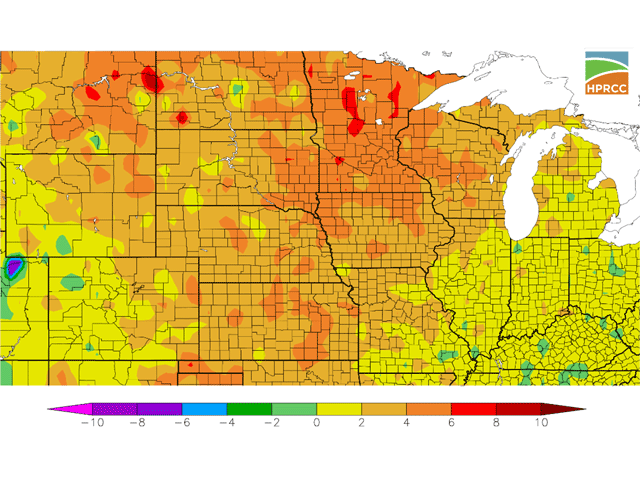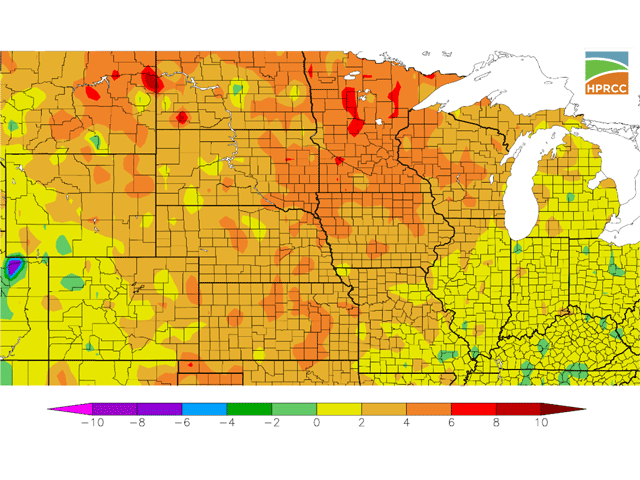Ag Weather Forum
Late-Summer Drought Brings Lower Corn Yield
U.S. row-crop harvest continues in full swing. Combines, trucks and grain carts are feasting on the ripe fields and filling bins and outdoor grain piles as quickly as is safely possible.
But, while the corn crop is large this year, the total has fallen off a bit from projections in late summer because of a round of dry-and-hot weather during the end of the season.
Late-season heat was most notable in the Western Corn Belt. During the month of September, much of the Western Corn Belt had average temperatures ranging from 4 to 6 degrees Fahrenheit above normal; and the lake country of northern Minnesota saw average temperatures pushing 6 to 8 degrees F above normal. Meanwhile, the majority of the Eastern Corn Belt had temperatures which were near to slightly above normal.
P[L1] D[0x0] M[300x250] OOP[F] ADUNIT[] T[]
The home-stretch heat dragged corn yield estimates down from numbers posted in August and September. Looking at individual states, Nebraska, Kansas and Missouri saw October NASS corn yield estimates which were several bushels per acre (bpa) less than in the previous two months.
Nebraska's October corn yield estimate of 174 bpa was 2% under the September estimate and almost 5% less than the August estimate. Kansas saw its October corn yield estimate of 122 bpa come in 4% below the September estimate. And Missouri's October yield estimate of 141 bpa is 3% lower than the September estimate. (Both Kansas and Missouri had September NASS-estimated corn yields which were higher than the August estimate.)
Those declines in yield in the Western Corn Belt played a key role in the lower national corn yield estimated in the October NASS report. The national U.S. corn yield is now pegged at 173.0 bpa, which is a half-percent less than estimated in September and just over 1% less than the official NASS estimate in August. This lower-yield trend was also noted in the crop years of 2000 and 2010, which also featured a round of late-season heat and drought. The impact of the late-summer heat is not as extensive this year as in those two previous seasons, due to the eastern Corn Belt largely avoiding the final round of heat.
This year's drought also added to the record number of billion-dollar weather and climate disasters recorded by the NOAA National Centers for Environmental Information (NCEI). The total damage cost of drought in 2023 is estimated at $4.5 billion along with 138 deaths. That total ranks 25th in drought damages in records going back to 1980, tying with 2016.
Details on extreme heat outbreaks during the 2023 growing season are available here: https://www.dtnpf.com/….
The full NOAA NCEI report on billion-dollar weather and climate disasters so far in 2023 is available here: https://www.ncei.noaa.gov/….
Bryce Anderson can be reached at Bryce.Anderson@dtn.com
Follow him on X, formerly Twitter, @BAndersonDTN
(c) Copyright 2023 DTN, LLC. All rights reserved.






Comments
To comment, please Log In or Join our Community .